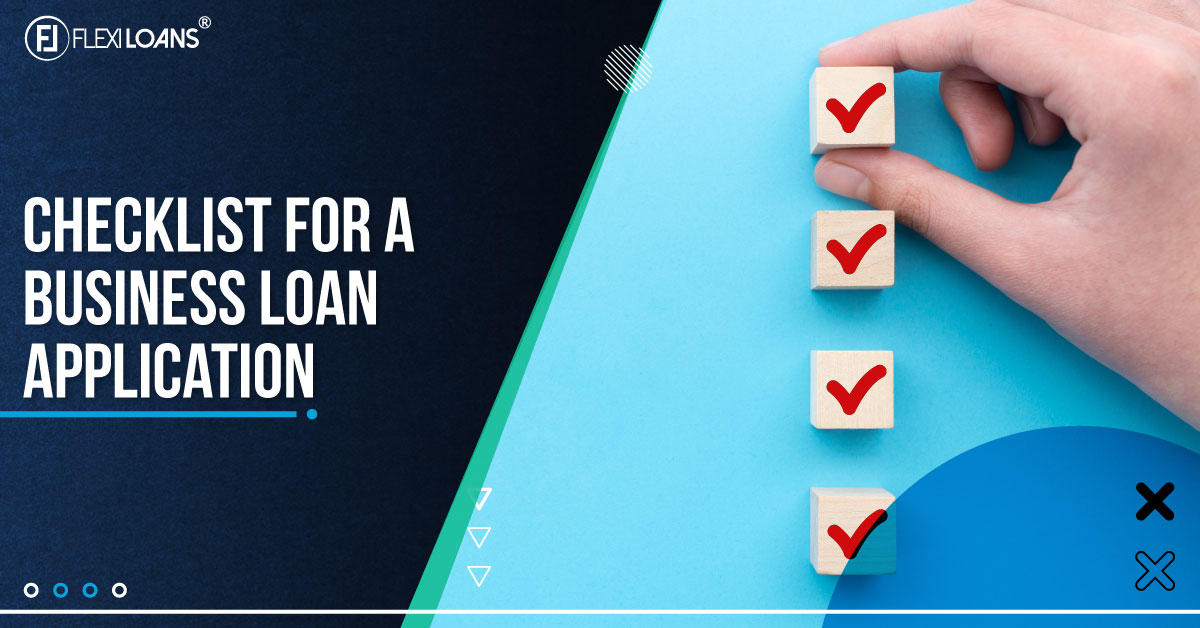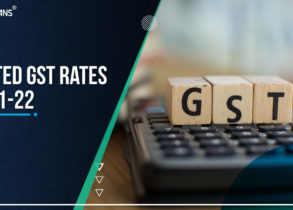Oct 29, 2021
Nov 15, 2021

Because of the availability of multiple funding options and the ease with which businesses can obtain loans, small business entrepreneurs have it easier than ever before. To take your company to new heights, you must first determine whether your current course of action is the best one. It is critical that you achieve your goals.
Getting a business loan in any location used to be difficult, and you felt like you were bouncing from one desk to the next. It usually involved preparing a massive number of documents. Even after providing the necessary documents, you had to wait several months to approve and disburse the loan. On the other hand, online business loans require minimal documentation and can be disbursed in as little as a week or two.
This blog is a detailed checklist of things that you require to apply for an unsecured business loan. Let’s get started.
Business Loan Application Form
A business loan is commonly used to fund, among other things, the expansion of a business, the acquisition of equipment and machinery, the purchase of inventory, or the increase of operating capital.
You can submit the loan request in a variety of ways. However, the information they request is the same. As a result, you must be prepared to respond to all inquiries. When it comes to filling out a loan application, preparation is everything. Questions like these are frequently posed:
- What is the purpose of your loan application?
- How are you going to pay off the loan?
- Do you currently owe any other loans?
- Personal background information
The banks will request personal details like your mailing address, tax identification number (PAN), and Aadhar card number.
Business Loan Documents Checklist: Requirements for a Business Loan
Your small business financing to-do list will include a lot of paperwork. Consider making a separate folder for your business loan application from the one containing your paperwork, and begin gathering the necessary forms and documents.
Here is a business loan documents checklist you must prepare:
Business loan: Borrower Information Form
As the name implies, Borrower information forms are used to create a profile of the individual applying for a term loan. It includes personal information such as your name, address, phone number, and email address, as well as information about your organisation such as its mission, goals, and values.
Background and Financial Information
You’re probably a partner, partial owner, guarantor, or officer of a small business. If this is the case, you must provide a personal history as well as a financial statement.
A lender will want to verify your credit score before providing you with funds to start or expand your business. The form requires personal identification information such as your phone number and address, as well as a declaration of your current financial assets. It requests information on your assets and liabilities so that the lender can assess your investment history and current net worth.
Loan History
Anyone giving money will most likely want to know about a person’s repayment history, or even how frequently they’ve applied for loans in the past. A small business loan application history can have an impact on your ability to secure a new loan.
Your loan application history statement, in any case, confirms any previous small business loan requests. It provides information such as whether you have been approved for previous loans. This information assists banks in determining whether you are a good candidate for a credit line.
Business Registration Proof
You must first obtain a license or certificate for your bank to accept your business as legitimate. When a company separates from the person who founded it, the legalities change. This will be determined by the nature of your business and the license or certificate required to operate legally in the state.
The first step in obtaining a small business loan is to register your company. Before applying for a business loan, make sure your company is registered.
Business Financials
A corporation’s financial accounts show how much money is coming in and going out and the overall strategy for managing that money. They can be a fantastic way to ensure that the revenue you hope to generate actually materialises.
If you already have a balance sheet, creating proper financial statements is simple. Your company’s financial statements will include assets and debts in the same way that personal bank statements do.
ITR Records
A business loan application will require your most recent tax returns, so have them ready when you apply. This step in the loan application process requires three years’ worth of personal tax returns for your small business. Ensure your tax returns are signed and contain all the required information before submitting them to your lender.
Partner Resumes
Each key member of your company must submit a personal resume. Unlike other resumes you may have seen, this one is tailored specifically for the loan application process.
Your professional history, credentials, and company goals can all be included in a resume that the lender can use to learn more about you in minutes. Your CV is an excellent place to highlight your business knowledge and ability to run a profitable business.
Business Overview
The business overview form outlines the overall vision and business objectives of the organisation in detail. When you submit your application, your bank will ask for information about your company’s history as well as a synopsis of your business plan. This is done for them to verify your credibility with them.
Lease Agreement if Any
If your company has a physical location, a copy of your lease is required. Your lender will review the lease’s terms and circumstances to ensure that your company has a fitting lease agreement. This section may or may not apply to you, depending on the type of business you run. It’s acceptable if you’re looking for a loan to start your entire online eCommerce business.
B2B: Accounts Receivable Aging and Accounts Payable Aging
The bank is especially interested in these two reports because they reveal how you utilise working capital. A business-to-business (B2B) enterprise is the only one that requires accounts receivable aging. Many B2B businesses offer their customers products or services on credit.
If your clients are slow to pay you, your accounts receivable aging report will show it. If your customers consistently fail to make payments, you risk having your debts grow. This will affect your profitability as well as your liquidity.
Bank Statement of Business
Your bank may request a year’s worth of bank statements as proof of your ability to repay. Before proceeding with a loan application, banks frequently require a year’s worth of personal and corporate bank statements. When used to verify the accuracy of financial information, bank statements can also provide the bank with information about your personal and organisational purchasing habits.
How to Choose the Right Business Loan Leander
After you’ve gathered all your paperwork, it’s time to apply for a business loan. To do this, you must select a loan provider that meets your specific demands and specifications. To find a business loan provider in your city, you’ll need to do some web research.
Select a few based on the paperwork needed, eligibility criteria of business loan, and any other relevant factors.
This will save you time because you won’t have to apply for a loan with numerous lenders before you find the ideal one. You may easily receive a business loan if you make sure you fulfill all the standards. Notably, internet loan providers feature a simple procedure that makes it easy to obtain a loan.
Things to Check Before you Apply for a Business Loan
Addressing these three areas before applying can help you get through the process more quickly:
Before you apply, examine your credit history, both personally and for your company. If you have a poor credit history due to late payments or bankruptcy, you will be required to explain in writing. Prepare to discuss the circumstances that led to your problems, as well as how you dealt with them. Include proof that you have paid your debts, such as a letter from your lenders.
Prepare to discuss your financial needs, including where you will get the money and how you will use it. Include this in your business strategy’s summary as well as its financials.
Wrapping Up
When you’re ready to submit your loan documentation to the bank, read and thoroughly analyse each one. As a result, you’ll be in a stronger position during the loan evaluation process. It will also ensure that you are not submitting the incorrect documents required for a business loan.
Deprecated: Function get_the_author was called with an argument that is deprecated since version 2.1.0 with no alternative available. in /var/www/html/wordpress/flexiloans.com/blog/wp-includes/functions.php on line 6114
Deprecated: Function get_the_author was called with an argument that is deprecated since version 2.1.0 with no alternative available. in /var/www/html/wordpress/flexiloans.com/blog/wp-includes/functions.php on line 6114







